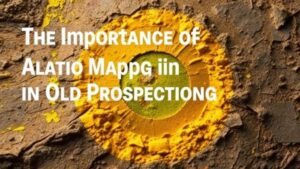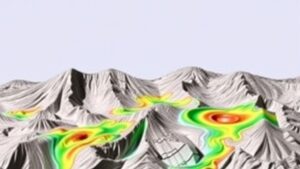Recovering Precious Metals From Weathered Outcrops in Dry Climates
Recovering Precious Metals From Weathered Outcrops in Dry Climates
The extraction of precious metals, such as gold, silver, and platinum, from weathered outcrops in dry climates has emerged as a significant area in resource recovery and environmental management. This process embraces both traditional mining practices and innovative technological advancements to maximize efficiency and sustainability. Notably, the dry climates of arid regions often present unique challenges and opportunities for mineral extraction.
Understanding Weathered Outcrops
Weathered outcrops are exposed rock formations that have undergone significant alteration due to environmental factors such as wind erosion, temperature changes, and chemical weathering. In dry climates, where water scarcity is prevalent, weathering can result in the concentration of valuable minerals, including precious metals. These outcrops, often fragmented and oxidized, require specialized techniques for effective extraction.
Geological and Environmental Considerations
Geologically, dry climates facilitate the formation of various types of mineral deposits. For example:
- Alluvial Deposits: Created by the weathering of rocks, these deposits often accumulate in riverbeds and near outcrops.
- Oxide Ores: In arid regions, weathering can lead to enriched secondary ores, particularly for metals like gold and copper.
But, the fragile ecosystems of dry climates present challenges for recovery operations. Sustainable practices must be considered to prevent ecological disruption. For example, reducing the carbon footprint during extraction can involve using lower-impact machinery and techniques.
Techniques for Recovery
Various techniques exist for recovering precious metals from weathered outcrops, each suitable for specific conditions and types of deposits:
- Gravity Separation: This method utilizes the density differences between precious metals and surrounding materials to separate them. It is particularly effective in alluvial deposits.
- Chemical Leaching: Employing solvents to dissolve metals from ore, this method is often implemented for oxide ores. Cyanide leaching, although effective, requires careful management to avoid environmental contamination.
- Bioleaching: Leveraging microorganisms to extract metals, this eco-friendly technique reduces chemical waste and is gaining traction in arid regions.
Case Studies in Precious Metal Recovery
Several notable case studies illustrate the successful recovery of precious metals from weathered outcrops in dry climates:
- Wadzana River, Namibia: Here, gravity separation techniques enabled miners to extract significant amounts of alluvial gold while preserving local ecosystems.
- Gold Fields Bioleaching Project, South Africa: This project showcased the effectiveness of bioleaching in arid environments, resulting in a more sustainable recovery process.
Challenges and Future Directions
Despite technological advancements, several challenges persist in recovering precious metals from weathered outcrops:
- Water Scarcity: Traditional methods often require water, posing difficulties in arid regions. Innovating dry processing techniques is crucial.
- Regulatory Compliance: Adhering to environmental regulations remains imperative to prevent ecological damage and ensure sustainable practices.
Future directions may involve integrating technologies such as remote sensing for site assessment and using artificial intelligence to optimize extraction processes. Continued collaboration between mining companies and environmental organizations will also be vital to balance economic benefits and ecological preservation.
Conclusion and Actionable Takeaways
Recovering precious metals from weathered outcrops in dry climates represents a dynamic intersection of geology, technology, and environmental stewardship. As the demand for these metals increases, the industry must innovate sustainable practices that address both economic needs and ecological health. Potential actions for stakeholders include:
- Investing in research for alternative, eco-friendly recovery methods.
- Useing stricter environmental management practices in existing operations.
- Fostering partnerships with local communities to ensure mutual benefits and support.
By adopting these strategies, the precious metals recovery industry can advance towards a more sustainable and responsible future.


